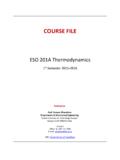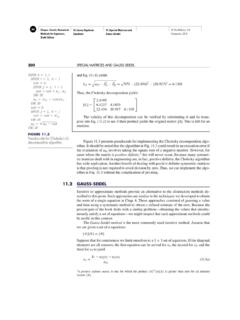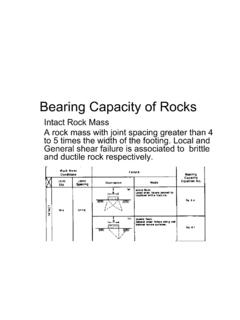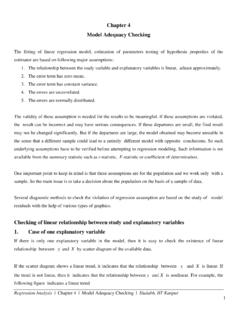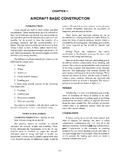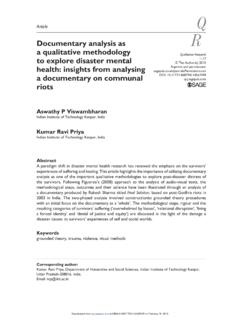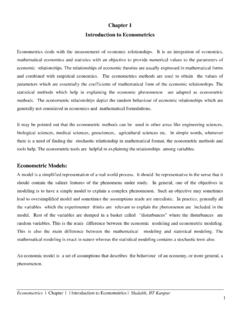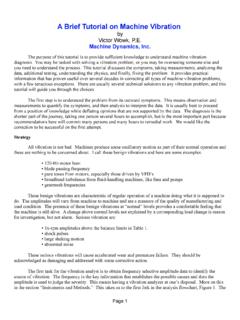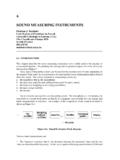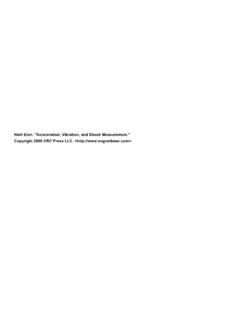Transcription of Metrology - IIT Kanpur
1 Engineering MetrologyEngineering MetrologyN. SinhaMechanical Engineering Department IIT KanpurIntroductionCross-section of a machine-tool slideway. The width, depth, angles and other dimensions allmust be produced and measured accurately for themachinetool tofunction Metrology is the science of measurement Dimensional Metrology is that branch of Metrology which deals with measurement of dimensions of a part or workpiece(lengths, angles, etc.) a part or workpiece(lengths, angles, etc.) Dimensional measurements at the required level of accuracy are the essential link between the designers intent and a delivered Metrology Needs Linear measurements Angular measurements Geometric form measurements Roundness Straightness Straightness Cylindricity Flatness, etc Geometric relationships Parallel, perpendicular, etc.
2 Concentric, runout, etc. Controlled surface textureTypes of Measurement and instruments UsedBasic Measurement DevicesAnalog and Digital Micrometers(a)Avernier(analog)micrometer .(b)Adigitalmicrometerwitharange(a)Avern ier(analog)micrometer.(b)Adigitalmicrome terwitharangeof 0 to 1 in. (0 to 25 mm) and a resolution of 50 in. ( m). It isgenerally easier to read dimensions on this instrument compared to theanalog measuring InstrumentsMeasuring RoundnessProfile MeasurementMeasuring gear-tooth thickness and profile with (a) a gear-tooth caliper and (b) balls and a micrometer.
3 Source:American Gear Manufacturers to TolerancesCan more than one or multiple parts be produced with exactly same dimensions? Why?Tolerance the allowable deviation from a standard, eg: the range of variation permitted in maintaining a specified dimension in a machined piece. WebsterWebsterWhy is it necessary?ConsequencesSpecificationSome DefinitionsBasic Size:The size with reference to which the limits of size :Actual measured dimension of the Line:It is a straight line corresponding to the basic size. Thedeviations are measured from this line. The positive and negativedeviations are shown above and below the zero line DefinitionsLimits of Size:The two extreme permissible sizes of a partbetween which the actual size should Size:The greater of the two limits of Size:The smaller of the two limits of :A term used by convention to designate allexternalfeatures of a part, including those which are not :A term used by convention to designate allinternalfeaturesof a part, including those which are not DefinitionsAllowance.
4 It is the difference between the basic dimensions ofthe mating the shaft size is less than the hole size, then the allowance ispositive and when the shaft size is greater than the hole size, thenthe allowance is :Itisthedifferencebetweentheupperlimitan dlowerTolerance:Itisthedifferencebetween theupperlimitandlowerlimit of a DefinitionsTolerance Zone:It is the zone between the maximum and minimumlimit Deviation:It is the algebraic difference between the maximumsize and the basic upper deviation of a hole is represented by a symbol ES (EcartSuperior) and of a shaft, it is represented by Deviation.
5 It is the algebraic difference between the minimumsize and the basic lower deviation of a hole is represented by a symbol EI (EcartInferior) and of a shaft, it is represented by DefinitionsSpecification of DTUnilateralToleranceIn this system, the dimension of a part is allowed to vary only onone side of the basic size, tolerance lies wholly on one side ofthe basic size either above or below this system, the dimension of the part is allowed to vary onboth the sides of the basic size, the limits of tolerancelie oneither side of the basic of DTQ1.
6 Type? Bilateral, Unilateral, Unilateral. ExerciseQ2. Tolerance? , , Express in limit form? Tolerance StacksEffect of Tolerance StackingA fit may be defined as the degree of tightness and looseness between two mating Fit In clearance fit, an air space or clearance exists between theshaft and hole. Such fits give loose joint. A clearance fit has positive allowance, there is minimumpositive clearance between high limit of the shaft and low limitof the hole. Allows rotation or sliding between the mating is used between those mating parts where no precision isrequired.
7 It provides minimum allowance and is used on loosepulleys, agricultural machineries FitForarunningfit,thedimensionofshaftsho uldbesmallerTypes of Clearance FitForarunningfit,thedimensionofshaftsho uldbesmallerenough to maintain a film of oil for lubrication. It is used inbearing pair FitIt is used on those mating parts where great precision isrequired. It provides medium allowance and is used in toolslides, slide valve, automobile parts, Fit A negative difference between diameter of the hole and theshaft is called interference. In such cases, the diameter of the shaft is always larger thanthe hole diameter.
8 It used for components where motion, power has to exists between the high limit of hole and lowlimit of the refers to maximum negative allowance. In assembly of thehole and the shaft, the hole is expanded by heating and thenrapidly cooled in its position. It is used in fitting of rims of Interference is required to assemble the hole and the shaft. It isused in car wheels, armature of dynamos part can be assembled into the other with a hand hammeror by light pressure. A slight negative allowance exists betweentwo mating parts (more than wringing fit).
9 It gives a semi-permanent fit and is used on a keyed pulley and shaft, rockerarm, Fit It may result in either clearance fit or interference fitdepending on the actual value of the individual tolerances ofthe mating components. Transition fits are a compromise between clearance andinterference fits. Theyareusedforapplicationswhereaccuratel ocationis Theyareusedforapplicationswhereaccuratel ocationisimportant but either a small amount ofclearance orinterference is FitIt refers to zero allowance and a light pressure is required inassembling the hole and the shaft.
10 The moving parts show leastvibration with this type of FitAforcefitisusedwhenthetwomatingpartsa retoberigidlyTypes of Transition FitAforcefitisusedwhenthetwomatingpartsa retoberigidlyfixed so that one cannot move without the other. It eitherrequires high pressure to force the shaft into the hole or thehole to be expanded by heating. It is used in railway wheels, slight negative allowance exists between two mating partsinwringing fit. It requires pressure to force the shaft into the holeand gives a light assembly. It is used in fixing keys, pins, etc.
